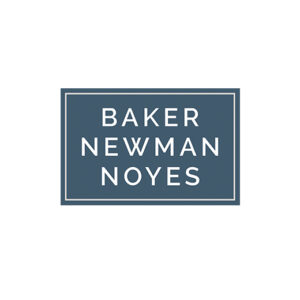Significant Changes are Proposed for Benefit Plan Audits

Financial statement auditing authorities recently issued significant proposed changes to audits of employee benefit plans. The changes result from a collaborative effort by the Department of Labor (DOL) and Auditing Standards Board (ASB), responding to weaknesses found in a number of benefit plan audits. The proposed changes primarily focus on expanded reporting and disclosures. The proposals tentatively are scheduled to first impact financial statements for periods ending on or after December 15, 2018, and promise increased duties for both auditors and sponsors of benefit plans.
The problem
Two years ago, the DOL issued a report following its assessment of the quality of 400 benefit plan audits performed by more than 200 CPA firms. In an event co-sponsored by BNN, we and our guests had the opportunity to hear Mary Rosen, an associate regional director in the Employee Benefits Security Administration of the DOL, elaborate on the results first-hand. Nearly 39% of the reviewed audits had a deficiency, and the number of deficiencies increased dramatically for those auditors who perform fewer than 24 plan audits per year. Four of 10 audits failed to meet professional standards, which put potentially $653 billion in plan assets and 22.5 million participants at risk.
Summary of the proposed solution
The ASB is an authoritative committee established by the American Institute of Certified Public Accountants (AICPA) to design auditing standards to which all CPAs must adhere. In April 2017, the ASB issued a proposed Statement on Auditing Standards (SAS) to address the DOL findings. Rarely accused of brevity, the SAS is entitled Forming an Opinion and Reporting on Financial Statements of Employee Benefit Plans Subject to ERISA.
The proposed SAS calls for a number of changes that will apply, primarily whenever management imposes an ERISA-permitted scope limitation.
Note: The concept of a scope limitation is critical to understanding the proposed SAS. ERISA rules have long permitted a scope limitation in certain instances whereby management may legitimately direct auditors to forgo testing in certain areas, if those areas have been certified by a qualified third party. The most common example involves a benefit plan’s custodian certifying the holdings of a plan, including number of shares and value of investments held, allowing CPA auditors to skip those steps. Auditors do, however, test allocations of assets to participants’ accounts, vesting, and matching, etc. The CPA’s scope is limited in that they would not re-test what the custodian already certified. Scope limitations are requested by management to save time and money and avoid redundancy.
Key elements of the SAS proposal include:
- Additional testing of certain provisions of the plan document; and new disclosures in the auditor’s report, describing the procedures and results
- Changes to the form and substance of the auditor’s report for limited scope audits
- Expanded written representations management will need to provide to auditors
- Considerations for the Form 5500 filing
Details and discussion of the proposed solution
Additional audit steps will be needed to address compliance with a number of provisions stipulated in the plan document, including but not limited to eligibility to participate in the plan, calculation of participant contributions, and payments made from plan assets. This requirement will expand the time incurred to complete many audits, and translate into increased fees.
The proposed SAS will also require auditors to verify that certifying parties are authorized and in a position to be able to issue their certification. The report must note that management is responsible for determining whether the audit scope limitation is permissible.
Many auditors already are performing procedures in areas outlined in the proposal. However, they may not be meeting the level of testing required by the proposed standards. Under current standards, auditors apply the concept of materiality by considering the risk profile of the plan and determining the related risk of material misstatement to the financial statements. The proposed SAS would remove this ability because the ASB chose specific provisions to be tested based on DOL predetermined quality issues. This change would require that auditors, even if it appears likely that time will be devoted to testing immaterial matters, must test these defined provisions and report on the results.
The task force determined that the auditor’s report should better explain the auditor’s responsibilities during an audit engagement. Therefore the proposed changes to reports would now include disclosures regarding internal control over financial reporting and compliance with certain provisions of the law, regulations, contracts and the plan document.
Certain members of management and those charged with the governance of EBPs are already subject to several representations. This proposal will expand the scope of these representations. The proposed SAS will require additional written representations acknowledging management’s responsibility for (a) determining whether a limitation on the scope of the audit is permissible and in accordance with ERISA; (b) evaluating whether the certification is prepared by a qualified institution; (c) evaluating whether the certified information is complete and accurate; and (d) determining whether the certified investment information is appropriately measured, presented, and disclosed.
The proposed SAS includes changes to the form of the audit report specific to audits of ERISA plans for which management imposes ERISA-permitted scope limitations. Currently, the audit report includes a disclaimer of opinion on the financial statements and an other-matter paragraph with an opinion on whether the form and content of the information included in the financial statements and supplemental schedules, other than that derived from the certified information, are presented in compliance with the DOL’s rules and regulations for reporting and disclosure under ERISA. The proposed SAS adds a new Basis for Limitation on the Scope of the Audit section and an expanded section discussing management and auditor responsibilities. It also creates a new form of opinion on scope-limited plans, and calls for a by-product report outlining findings on specific plan provisions relating to the financial statements.
The problems with the solution
While ASB’s intentions are focused on improving the value and relevance of the auditor’s report, the reality is that auditors and sponsors will be required to disclose a significant amount of new information not currently required in benefit plan audit reports – and the added verbiage and efforts associated with producing it may not necessarily reduce deficiencies. That information includes compliance findings (such as weaknesses) unless the auditor can conclude they are “clearly inconsequential.” Because the auditor’s report is attached to the plan’s Form 5500 filing (which is public record), there will be increased visibility of findings that historically have been limited to management or others in a position of oversight. Audit reports generally are intended for a specific audience of relatively sophisticated financial statement readers, and disclosed deficiencies easily could be taken out of context by casual readers or individuals not familiar with the plan or the sponsor. We are hard pressed to identify other situations where private companies are required to disclose deficiencies in internal control, or similar matters, to the general public.
By removing the concept of materiality from some of the testing, the proposal will require time to be spent (and fees to be incurred) on inconsequential matters. While a clear discussion of delineation of duties between management, auditors, and certifying parties is useful, it is unclear whether the proposed level of increased representations is needed.
There are some valuable enhancements offered by the proposed SAS, and with deficiencies having been found in 39% of audits reviewed by the DOL, something needs to change. However, most of the proposed changes focus on increased information being offered to readers, including explanations regarding who was responsible for what, and what their justification was for doing what they did. Perhaps more attention should be focused on another finding in the DOL report – that most of the deficient audits were conducted by auditors with limited annual employee benefit plan audit experience. Crafting the steps required to form an opinion on financial statements requires familiarity with the types of entities (or plans) being audited, and benefit plans are an incredibly unique subset. A very proficient auditor of a manufacturing entity might not necessarily be qualified to audit that manufacturer’s benefit plans – not without specific training and skill. As is the case with most aspects of life, nothing can top experience. Well-informed and attentive plan sponsors undoubtedly make a difference too, and an astute auditor will design an audit that considers the strengths and/or weaknesses of the professionals involved with the plan.
The proposed SAS seems to assume auditors’ competency levels will remain the same, and imposes additional steps and significant disclosures designed to accommodate them. In our opinion, a “one size fits all” approach nearly always contains unnecessary components, and this appears poised to be time-consuming for its auditors, expensive for the plan, confusing to many of its readers, and unnecessary in cases where deficiencies did not exist. Benefit plan audits simply should be conducted by auditors who specialize in such audits, and this proposal could be better designed to achieve that goal.
Conclusion
The proposed SAS includes a number of “Issues for Consideration.” These are specific elements of the SAS identified by the ASB for which they are seeking feedback. As you ponder these issues, it is important to also consider how these changes will translate to increased quality of EBP audits.
Comments are due by August 21, 2017. We highly encourage plan sponsors to review the issues for consideration, contemplate the impact of the proposal on the audits of their plans, and discuss concerns with their auditors and ERISA counsel. Comments should be addressed to: Sherry.Hazel@aicpa-cima.com.
If you have any questions or would like to discuss these proposed changes further, please contact your BNN advisor at 1.800.244.7444.
Disclaimer of Liability: This publication is intended to provide general information to our clients and friends. It does not constitute accounting, tax, investment, or legal advice; nor is it intended to convey a thorough treatment of the subject matter.
